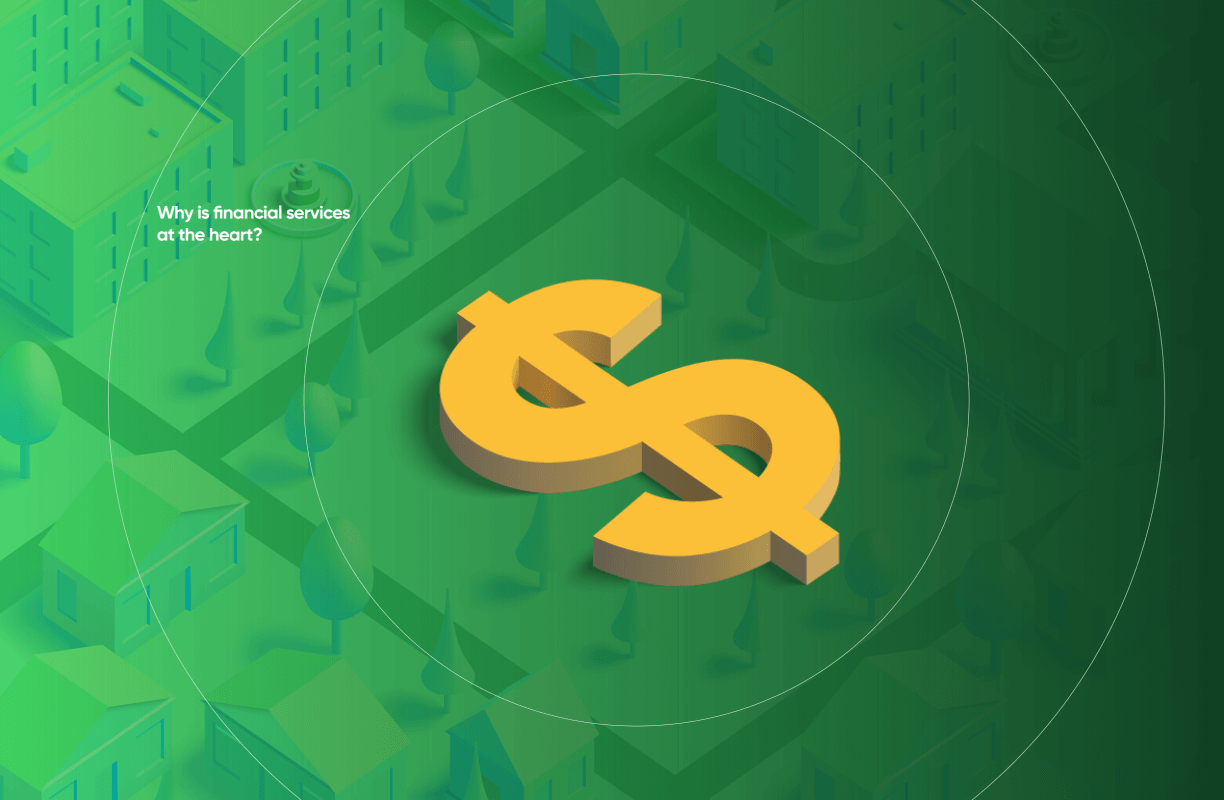There are 26 Sectors of the economy. This is my personal classification which I will explain. National Tax accounting and macro economic reporting have different classifications that tend to be smaller and more clustered, and in my view, more messy.
My career has been part Economist, and part Strategy consultant, working across many sectors. I’ve had the benefit of working directly with 21 of these 26 sectors in my career, across 5 geographies (UK, US, India, Middle East, Far East Asia). I’ve worked with start-ups, large companies, and a number of government organizations. I’ve seen these sectors from the inside: their inputs, outputs, their value chain and critically, their value creation.
In a different role, my experience as an Economist has meant I’ve also analyzed sectors as part of the macro economy: as boxes that fit together in the wider picture of a vibrant economy - across the developed world and the developing world.
Inspired by technology stacks - I’ve developed a classification system for understanding the “Economy stack” of sectors of an economy and how they fit together. We will use this framework, and also draw on the work of the Nobel prize winning Wassily Leontief (1973) to visualize what is happening in an economy.
Today, I am a Consumer FinTech entrepreneur - the intersection of Financial services and Consumer Technology. The goal of this analysis is to demonstrate why Financial services beats at the heart of an economy, and what this means.
We start with the 26 sectors as per the classification (green highlights where my personal experience has been).

For an effective classification, these 26 sectors should be MECE (mutually exclusive and collectively exhaustive), and they are. They are exclusive - it is very possible to define them so that nothing falls through the gaps, and so that there is no double counting. They are exhaustive. Together, their value-add contributions (not gross outputs) to the economy will add to 100% of national output, i.e., 100% of Gross Domestic Product (GDP).
Now where do we go from here? How do we put them together to understand a model of the economy?
The first step is building the Economy stack. We can construct the stack into the following 7 layers:

We assign sectors into each layer of the stack:
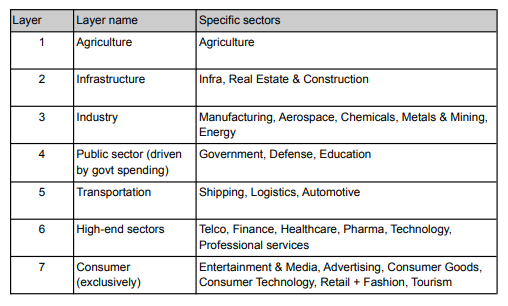
Visualized as a stack below:

To make this more concrete, we consider what % of the pie these sectors constitute (typically speaking) in a developed economy and also a developing economy:
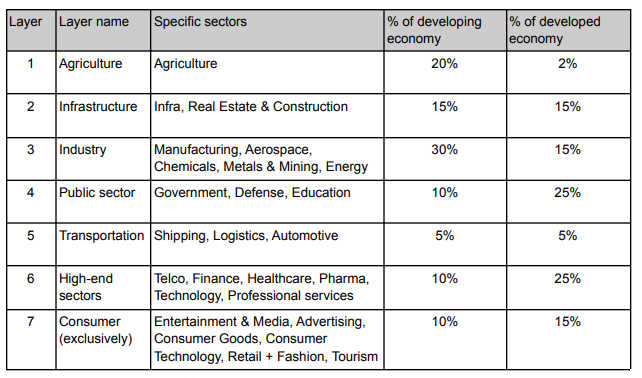
And the pie diagrams for a better visualization:
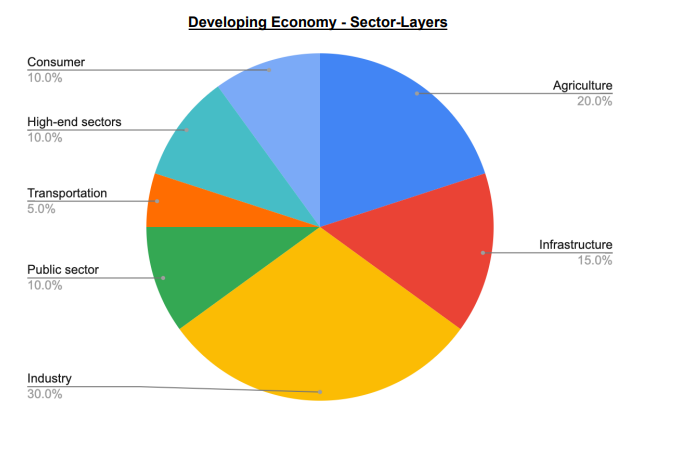
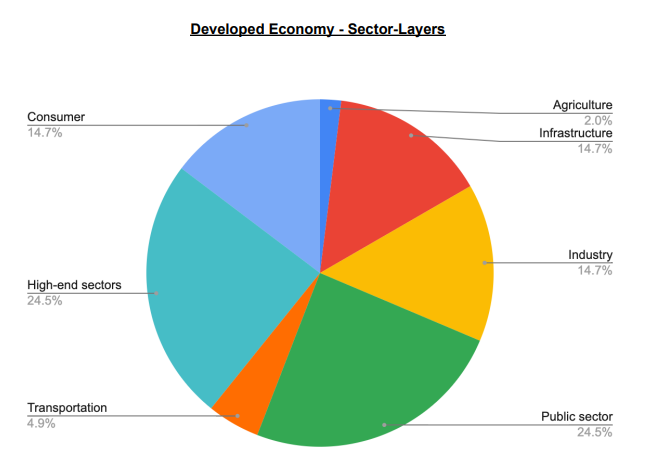
Note this is “typical” for indicative purposes. It is not a hard and fast rule. There are many deviations based on where economies have specialized, fueled by their advantages in international trade (more on this in part 2).
This gives us an introduction to the sectors of the economy and how they fit together into the 7 layers of the Economy stack. In part 2 - next week - we will analyze the trade-ability of sectors and the input-output framework for how sectors interact in an economy. Lastly, we will cover why it is that Financial services and Energy are so critical to every economy.
Read Part 2 next week. Follow the Bright Blog, so you don’t miss this.
Bright builds a life beyond debt.
Bright is a super app that crushes your debt. Our products include Balance Transfers for Credit Card Debt, Credit Score Boosters, Smart Financial Plans. and Automated Savings and Investments. We are the highest ranked app out there for helping thousands get debt-free every day. We're a consumer FinTech company, and we're experts in Data Science technology, with a team of 200+ Bright-Ones across the US, Europe and India.

